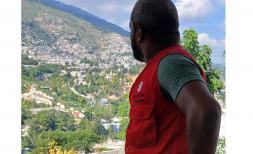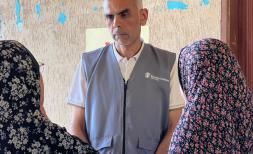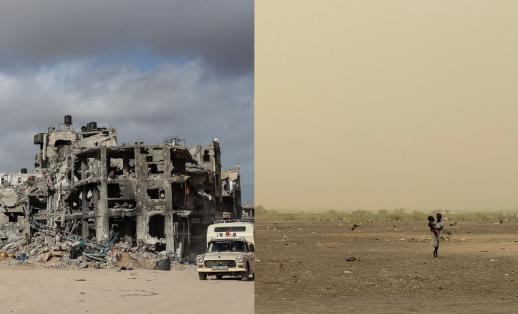Floods in Afghanistan: What do they mean for children?

A child watching the village destroyed by recent floods. Atabek khadim/ Save the Children
Afghanistan's children have endured decades of conflict and suffering. Now, a perfect storm of climate disasters, a severe economic crisis and the collapse of essential services since the US withdrawl from the country are pushing children to the brink.
The recent flash floods and torrential rains have only made matters worse for a country suffering its worst humanitarian crisis in decades.
{cta | A humanitarian catastrophe is unfolding in Afghanistan. <span class="text-primary">Your support is urgently needed</span>. | https://donate.savethechildren.org/en/donate/donate-child-emergency-fund| Donate now}
What has happened?
Flash floods in Northern Afghanistan have killed at least 200 people and left about 40,000 children homeless.
Water tore through villages, sweeping away homes and killing livestock. Children have lost everything.
Children and their families are now living under trees or in the ruins of their homes.
12-year-old Firoza* was at home with her sisters and nieces when she heard thunder – and then the sound of water rushing down the hill above her. She said:
“I wanted to climb up the hill, but I heard the flood. People shouted to me to come down because a flash flood was coming from the top [of the hill]. If I had not gone inside the house, I would have been taken away by the flood. My sister was just a few steps away from me. I shouted many times, but she did not hear me, and the flood took her away with the two children.”
Firoza’s 4-year-old niece was one of those children. She was swept away and did not survive. Firoza’s sister was also seriously injured and was airlifted to hospital.

Firoza*'s house which has been partially damaged in recent flash flood. Ummay Habiba/ Save the Children
How are we responding?
Less than 48 hours after the floods, Save the Children’s 'clinic on wheels' was in Baghlan province treating families. The mobile clinic has a medical team, mental health specialists and a mobile child-friendly space.
Our health teams have so far provided services to 1,758 people. We have also distributed 50,000 litres of drinking water over the last three days and, working with local partners, we have delivered essential items including blankets, children’s clothes and kitchen and hygiene kits.

Save the Children Staff speaking to the locals to assess the impact of the floods and identify their needs. Ummay Habiba / Save the Children
How can you help?
The impacts of these devastating floods are immediate – and long term. Children urgently need clean water and healthcare to ensure that the existing disaster is not made even worse by a disease outbreak. They also need long term mental health support – so many have lost loved ones.
80% of Afghans rely on agriculture for their income but there is no quick fix for the thousands of acres of devastated farmland. There is no easy solution for livelihoods that have yet again been decimated by the effects of the climate crisis.
With more support from the international donor community, we can together address the immediate and long term impacts of the climate crisis in Afghanistan and help communities to prepare for the impacts of extreme weather.
Donate to our Children's Emergency Fund to support children living in crisis in Afghanistan.







